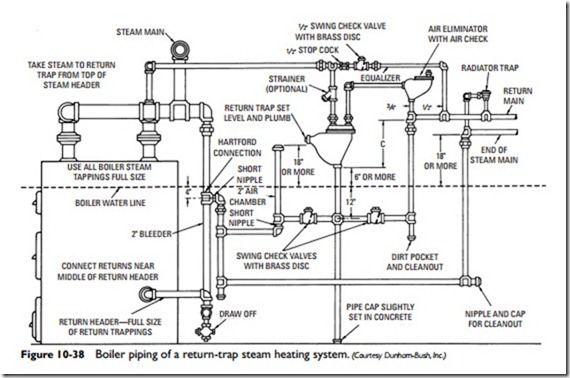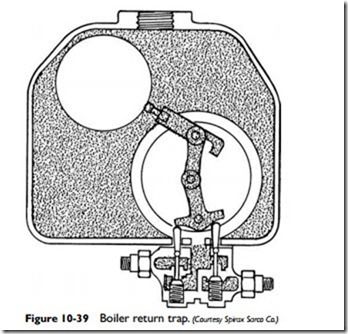Boiler Return Traps
A boiler return trap (or alternating receiver) is a device used in some vapor-steam heating systems to return condensation to the boiler under varying pressure conditions of operation up to the working limit of the boiler. A vapor-steam heating system in which a boiler return trap is used is sometimes referred to as a return-trap system. A typical installation in which a boiler return trap is used is shown in Figure 10-38.
As shown in Figure 10-39, a boiler return trap consists of a chamber containing a float, which is linked to two valves. These valves control the openings to two connections on the top of the trap. One of these connections (the steam inlet) is connected to the steam header and direct boiler pressure. The other connection is vented to the atmosphere.
Condensation returning from the radiators is unable to enter the boiler by ordinary gravity flow, because the higher pressure of the boiler keeps the check valve closed. As a result, the condensation is forced to back up in the vertical pipe connected to the boiler return trap. As the condensation rises, it fills the bottom of the trap and lifts the float. At a certain level, the float causes the air valve to close and the steam valve to open, allowing steam at boiler pressure to enter the top of the trap. This steam at boiler pressure plus the gravity head (a boiler return trap must be located at least 6 inches above the water level in the boiler) is sufficient to force the condensation back down the pipe, through the check valve, and into the boiler.


